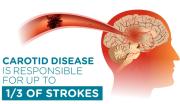
Blinking is something we do roughly 15 -20 times a minute without even thinking about it. That blink serves to quickly lubricate the eye and give it a split second break from harsh environmental irritants like dust, sand, allergens and lights. Unfortunately for many suffering with dry eye, the blink does not quite do the job it used to do.
Dry Eye
When your eyes itch, burn and tear, is it a result of seasonal allergies or could it be something going on in your eyes? That is a question only your ophthalmologist can answer. Dr. Daniel Connors of Foxman, Margolis Retinal and Ophthalmic Associates said chronic dry eye, very much unlike its name, will cause a patient’s eyes to tear. He explained that the quantity of tears as well as the quality of tears on the surface of the eye decreases in patients with dry eye.
“It seems counterintuitive for the condition to be referred to as dry eye because most patients will experience eyes that are constantly tearing,” said Dr. Connors. He explained what happens is frequently tied to aging of the eye. “It is a two-tier factor,” said Dr. Connors. “The lipid or fat component of tears that keeps the tears on the surface of the eye thins with aging. Without that lipid in the tears, they often do not coat and lubricate the person’s eye as they had done when they were younger.” The result is eyes that feel dry and burn and they are producing tears that do not lubricate the eyes.
Some vitamins are suggested to help the symptoms of dry eye, including certain omega-3 fish oils. Dr. Connor suggested these may help patients by improving the lipid secretions in their eye and therefore helping the tears to better lubricate the eye.
According to Prevent Blindness, the nation's oldest eye health and safety non-profit organization, people who have chronic dry eye are at an increased risk of eye infection. Approximately 26 million people have some degree of dry eyes. In addition to advanced age, other factors for dry eyes include extended computer use. It is also more prevalent in women. Aside from the burning and tearing, people with dry eyes may experience photophobia, or a sensitivity to light.
Getting Relief
Dr. Connors weighed in on using drops in order to get some kind of relief. “It is important to do a little research and see what the ingredients are in eye drops before using them. The object is to lubricate the eyes so it is suggested that a person use drops that closely mimic the chemical composition of natural tears,” said Dr. Connors. He added that patients should not use products that advertise to get rid of bloodshot or red eyes to combat dry eyes. “Those products are vasoconstrictors that constrict the blood vessels in the eye in order to reduce redness. The problem is that eyes can adapt to the use of the vasoconstrictor and build up a tolerance to the products,” said Dr. Connors.
He also suggested using a warm compress over the eyes for a few minutes to give some relief.
More serious eye conditions
Dr. Connors said there are a number of problems that he and his associates see in their practice as retinal specialists that require attention: age related macular degeneration (ARMD) and detached retinas.
According to the physician, the majority of detachments cause substantial visual disturbances. “Eyes are remarkably fragile. A catcher who is struck in the eye with a foul ball may lose their vision. While that is an extreme case, I tell anyone who may work with metal to wear eye protection, including construction workers or welders, but it’s also important for people doing any activity where there is something flying in the air, like cutting grass. ”
Dr. Connors said there is nothing subtle about a detached retina, saying that the person will have a significant increase in the number of floaters or spots in the line of vision. Some people will mistake it for cataracts but they are not the same. “Some patients say they see a flashing light in their eye. That is a symptom of a tear and it is a reason to immediately make an appointment.”
ARMD is a degenerative process of the outer layers of the retina and it is largely age related and is genetic. “It is like looking through a fun house mirror,” explained Dr. Connors. He said 70 percent of the cases of ARMD occur in women, though some men may develop it. It is more prevalent in smokers than non-smokers and genetics play a role. Dr. Connors said while there is no cure for ARMD there is a great deal of research currently underway utilizing stem cell therapy that is showing promise.










